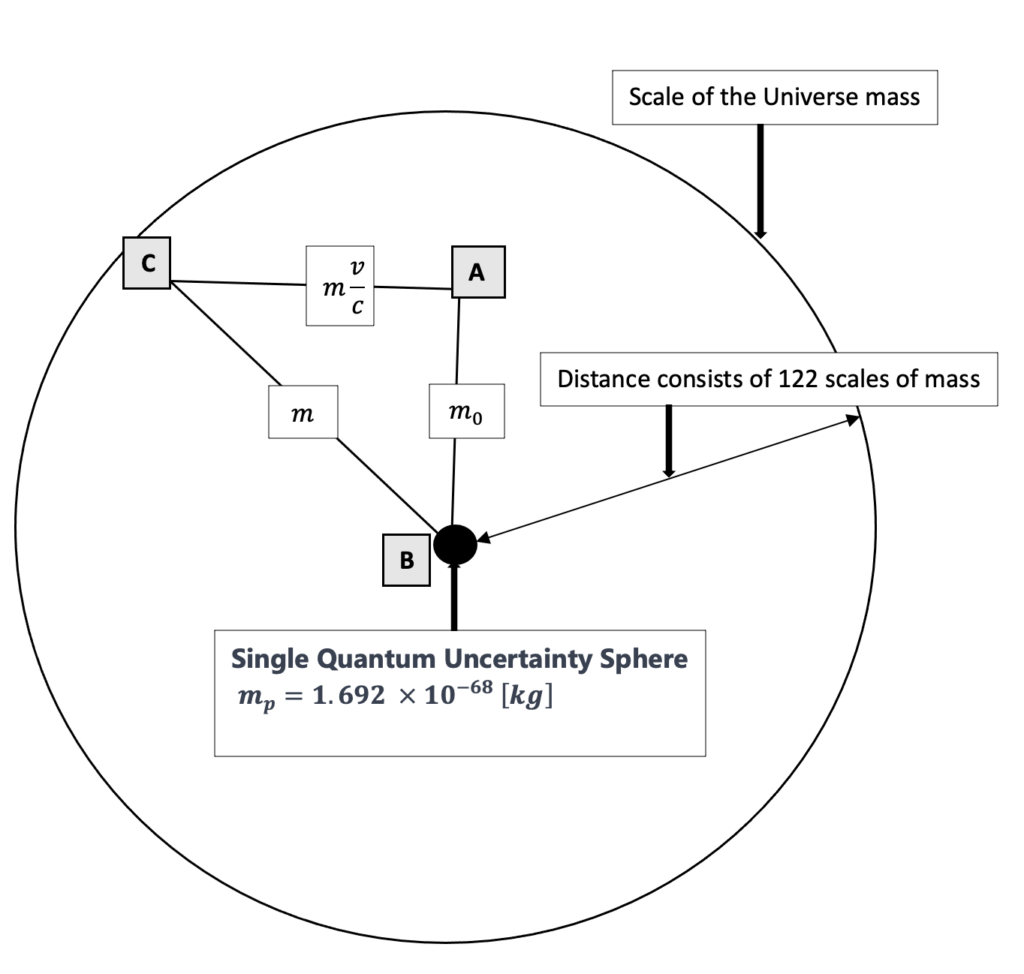
Diagrammatic Illustration of Space-Time Geometry Centered Around the Single Quantum Uncertainty Sphere. This figure delineates the spatial connections between a moving entity (A to C) and an observer situated at B, while considering quantum uncertainty. From this diagram, one can calculate time dilation in the Special Theory of Relativity by A. Einstein.






